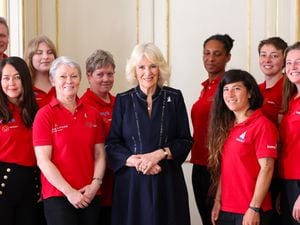Fall in life expectancy for men and women in UK driven by impact of pandemic
The Office for National Statistics has set out its estimates of the average number of years people will live beyond their current age.

Life expectancy in the UK has fallen for both males and females, with the reduction driven mainly by the impact of the coronavirus pandemic.
A boy born between 2020 and 2022 is expected to live until he is 78.6 years old, while a girl born in that period is expected to live for 82.6 years, the Office for National Statistics (ONS) said.
This compares to children born between 2017 and 2019, with life expectancy having fallen by 38 weeks from 79.3 years for males born in that period and by 23 weeks from 83.0 years for females.
The ONS said the pandemic had led to increased mortality in 2020 and 2021, and the impact is now seen in the latest life expectancy estimates.

However, the ONS said this does not mean a baby born between 2020 and 2022 will go on to live a shorter life, as life expectancy can increase as mortality rates improve through the years.
Pamela Cobb from the ONS said: “After a decade of slowing life expectancy improvements, we’ve now seen life expectancy fall for both men and women. This decrease has been mainly driven by the coronavirus pandemic, which led to increased mortality in 2020 and 2021.
“However, a fall in life expectancy does not mean that a baby born in 2020 to 2022 will go on to live a shorter life. The average lifespan of a baby born today will be determined by changes in mortality across their lifetime. If mortality rates improve, then life expectancy will go back up.”
The latest estimates mean life expectancy at birth has returned to the same level it was for females born between 2010 and 2012 and is now slightly below the 2010 to 2012 level for males, the ONS said, noting that life expectancy improvements have been slow for the past decade.
The King’s Fund charity, which works to improve health and care in England, said the data “lays bare the impact that the pandemic has had on life expectancy in the UK” and suggested a failure to bounce back following that period could point to “deeper problems with the health of the nation and the resilience of the health care system”.
The charity said: “Improving life expectancy in the UK will require a coherent cross-government strategy that supports people to make healthy choices, identifies and treats illness earlier, and reduces health inequalities by improving the health of people in deprived communities.”
England consistently has the highest life expectancy at birth for males and females, while Scotland has the lowest, the ONS said.
For babies born between 2020 to 2022 life expectancy was estimated to be 78.8 years for males and 82.8 years for females in England, 78.4 years for males and 82.3 years for females in Northern Ireland, 77.9 years for males and 81.8 years for females in Wales and 76.5 years for males and 80.7 years for females in Scotland.
Increased mortality seen since the start of the pandemic has also led to a decline in life expectancy for older people, the ONS said.
For people aged 65 years between the years 2020 and 2022, this was estimated to be 18.3 years for males and 20.8 years for females in the UK.
The ONS said the estimates are approximately the same as estimates for people aged 65 in the period 2011 to 2013.
The organisation describes life expectancy as a population-based statistical measure of the average number of years a person has before death.
Meanwhile, separate figures from the ONS showed that in 2022 the estimated population of England and Wales aged 90 years and over reached its highest ever total.
There were an estimated 550,835 people aged 90 or older in the two nations, up by 2.1% compared with 2021.
The number of centenarians, someone aged 100 years or older, has more than doubled since 2002, with an estimated 15,120 living in England and Wales in 2022, the ONS said.
The statistics body said greater improvements in male life expectancy in the past three decades have led to a narrowing of the ratio between the number of men and women aged 90 years and over.
There were 4.4 women per man aged 90 years and over in 1990, a ratio that has now reduced to two women per man in 2022.





